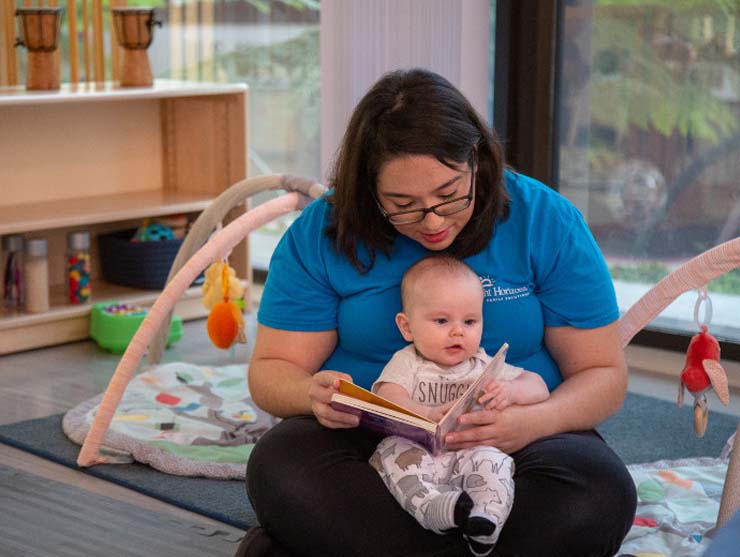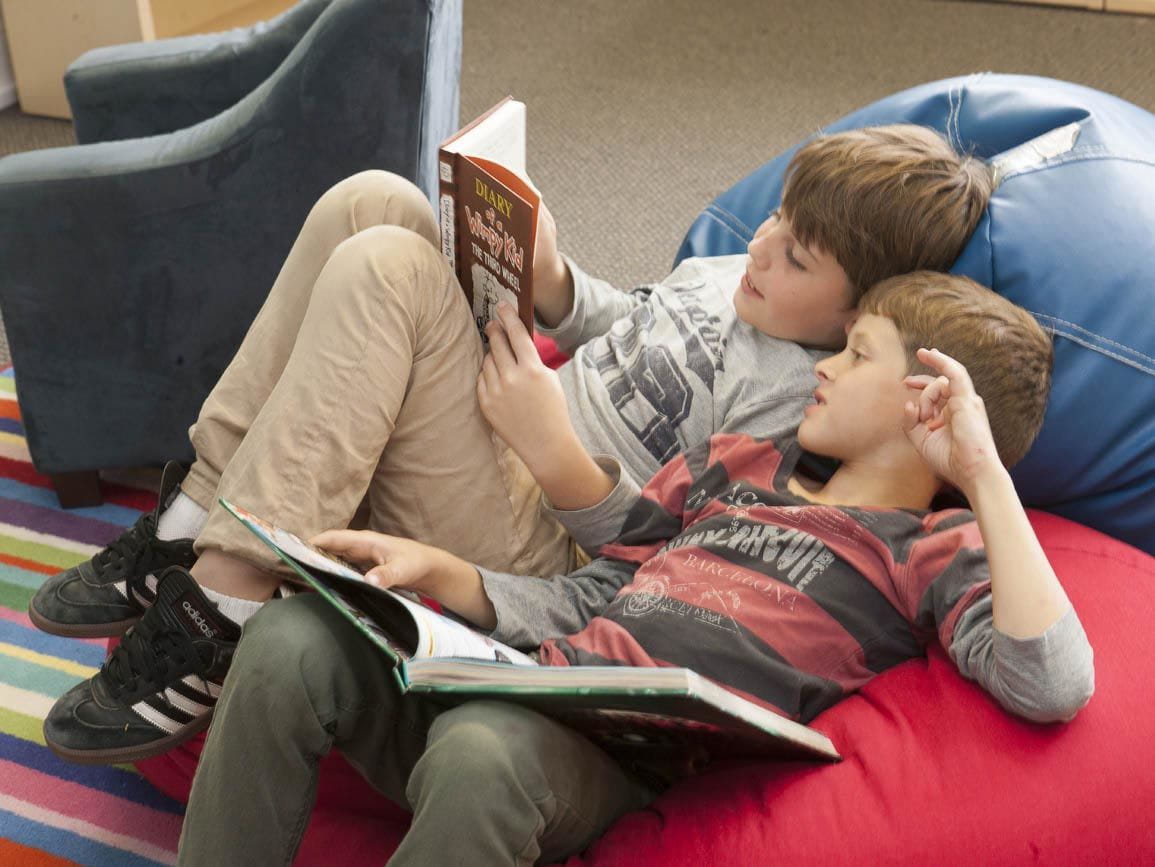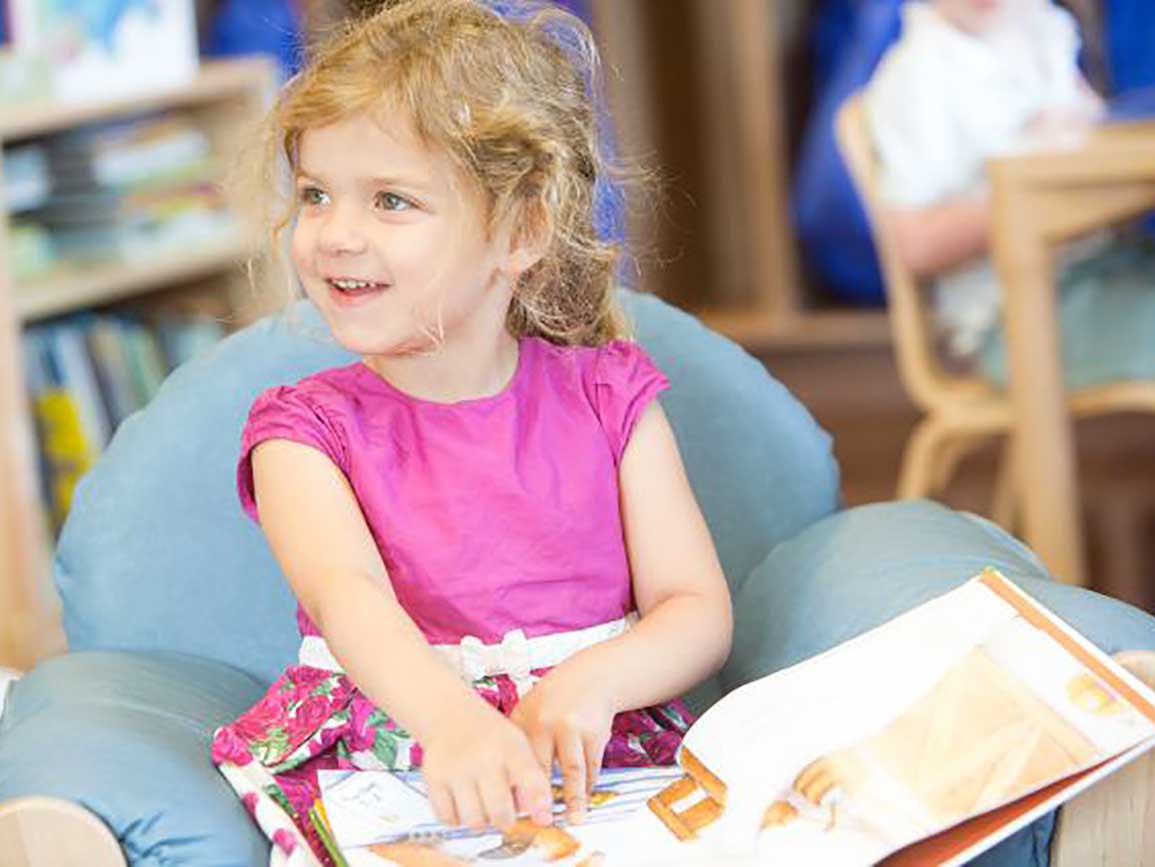I know that reading to preschool and school-age children is good, but is reading to babies really important? Do they even understand what you are saying?
The answer to both questions is emphatically "yes." Reading to babies contributes to the development of their growing brains and gives them a good start towards a lifelong love of reading and good literature. When you read to infants, it can also help language development as they are taking in information and beginning to learn about speech patterns. In addition, synapses connect between your infant's neurons as you read aloud, positively affecting child development in many areas.
Infants tune in to the rhythm and cadence of our voices, especially the familiar voices of their parents and caregivers. While initially the rhythmic phrase, "Brown bear, brown bear, what do you see?" may not hold meaning, your baby is taking in the sounds of language and how they fit together.
As babies see a picture of a red bird in the book and you name the bird, they begin to make the connection between what you say and the picture of the red bird. The more you read that book, the stronger the connection. The repetitive storyline makes the book fun, engaging, and easier to remember.
Reading to babies is not only a way to inspire a love of books from infancy, but also an important way to grow a baby's vocabulary—first his understanding vocabulary and later her speaking vocabulary.
What Is the Best Way to Read to Babies?
Of course, reading aloud to an infant is different than reading aloud to a preschooler. With a baby, you may not get through the whole book. Your baby may want to hold the book and chew on it or try turning pages. All of these actions are appropriate and help your child become familiar with books and how to handle them. Here are some tips to follow when reading to your baby.
- Make reading together a close cuddly time. Reading before bed may be the perfect time to hold your baby on your lap and cuddle together while you read.
- Don't worry about reading a book start to finish. It is great if you can, but if your child wants to stop and hold or chew on the book, that is okay. That is another way infants take in information about their world.
- Point out and name pictures. Later ask your baby to find the "cow," "horse," etc., when you point to it.
- Increase the length and complexity of books as your child shows interest. By about one year of age, some babies will enjoy hearing a short book with a storyline.
How to Choose Books for Babies
Books for babies should be easy for them to hold and manipulate. Books in heavy cardboard (board books), cloth, plastic or even wood are popular and hold up to a baby's use.
Some recent favorites from the Growing Readers Books of Excellence and Notables include:
- "Mommy, Mama, and Me" by Lesléa Newman
- "Daddy, Papa, and Me" by Lesléa Newman
- "Peck, Peck, Peck" by Lucy Cousins
- "Show Me Happy" by Kathryn Madeline Allen
- "Little Chickies/Los Pollitos" by Susie Jaramillo
Find other notable books for babies on our Growing Readers page. Enjoy reading as a wonderful opportunity to connect with your infant and build his or her reading brain.
More on Reading to Babies and Infants
- Discover our list of the best children’s books of 2017.
- In this parent webinar we share expert storytelling tips and techniques that will help you take reading aloud to your children to the next level.
- See our bloggers’ picks for the best books for babies in The Family Room Blog.





